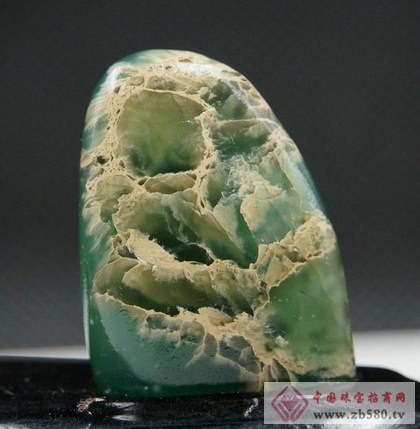Huakeng Stone is a kind of Shoushan Stone. Also known as Lionhead Stone, it is produced in Lushan Mountain. The mountainous area is mostly earthy structure. The flower pit stone veins are scattered or scattered in the mountains and buried in the mountains. When mining, the surface is covered with hard sand. The stone color of the flower pit stone is very rich, and the red, yellow, white, gray, green, and various colors are often mixed together. There are often streaks and layers in the stone, coarse, stone, and there are many fragments scattered in the knife. Among them, the color-friendly people are called flower pits, and the flower pits are frozen, which is quite rare. Flower pits are frozen, and Taiwan is called tiger skin jelly. The crystal frozen stone in the flower pit stone is of great ornamental value and is particularly lovable. In particular, the crystal frozen body in its texture, with thousands of postures, radiant and beautiful, is very beautiful, and has the reputation of Shoushan Diamond. Nowadays, it is very difficult to find a flower-filled frozen stone with a good shape, color, texture and crystal. If there is an image of a flower-like stone, or a wonderful chapter, it is even more The best, the gods. The flower pit stone deserves to be the true photo of the colorful stone of the "Nvwa Tianshi Stone" and "Heavenly Treasures of the Heavens" in the moving legend of ancient Chinese mythology. Nylon is a generic designation for a family of synthetic polymers, based on aliphatic or semi-aromatic polyamides. Nylon is a thermoplastic silky material[1] that can be melt-processed into fibers, films, or shapes.[2]:2 It is made of repeating units linked by amide links[3] similar to the peptide bonds in proteins. Nylon polymers can be mixed with a wide variety of additives to achieve many different property variations. Nylon polymers have found significant commercial applications in fabric and fibers (apparel, flooring and rubber reinforcement), in shapes (molded parts for cars, electrical equipment, etc.), and in films (mostly for food packaging).[4] Nylon Fabric Shaoxing Blange Import&Export Co.,Ltd , https://www.blg-yc.com
Nylon was the first commercially successful synthetic thermoplastic polymer.[5] DuPont began its research project in 1927.[6] The first example of nylon (nylon 6,6) using diamines on February 28, 1935, by Wallace Hume Carothers at DuPont's research facility at the DuPont Experimental Station.[7][8] In response to Carothers' work, Paul Schlack at IG Farben developed nylon 6, a different molecule based on caprolactam, on January 29, 1938.[9]:10[10]
Nylon was first used commercially in a nylon-bristled toothbrush in 1938,[11][12] followed more famously in women's stockings or "nylons" which were shown at the 1939 New York World's Fair and first sold commercially in 1940.[13] During World War II, almost all nylon production was diverted to the military for use in parachutes and parachute cord. Wartime uses of nylon and other plastics greatly increased the market for the new materials.[14]
What is Huakeng Stone?
Next Article
What are the types of ancient jade house appliances?
Prev Article
Qing pro-hut for Shanxi Recruitment join partners